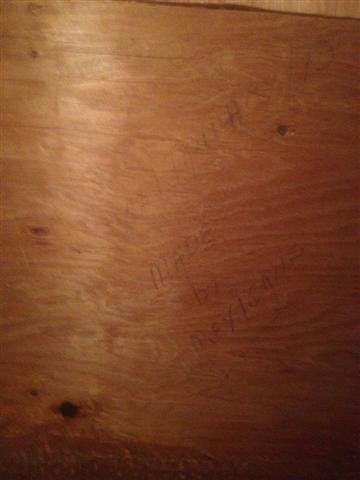jclays
Senior Member
Currently own a 1966 Californian Express and have be looking to upgrade to a 38 or 42 Tri-cabin. Can anybody tell me if the house is fiberglass, fiberglass over wood? Any wood except for the interior? My 1966 is all glass.
1976 and later 28', 30', 34', 37', 38', and 42' the hull and superstructure were all molded fiberglass. The hulls were solid, hand laid, fiberglass and no core. Interior cabin floors are 3/4" plywood usually carpeted and interior walls and bulk heads are covered with finished mahogany. Exterior doors, rails and trim are usually teak. I've seen a few with all stainless rails. 34' and larger were almost all twin diesel, either Perkins or Cat.Currently own a 1966 Californian Express and have be looking to upgrade to a 38 or 42 Tri-cabin. Can anybody tell me if the house is fiberglass, fiberglass over wood? Any wood except for the interior? My 1966 is all glass.
When I cut into my 1977 foredeck for my windlass installation, I found a thick, dense ply core encapsulated in fiberglass. No balsa.
Both materials have advantages and disadvantages. The balsa is end grained short blocks that it is thought to concentrate the rot around the water intrusion because the cell structure being vertical resists horizontal migration of the rot. Plywood has horizontal cell structure and the thought is rot migrates more easily. I don't know if this really holds true. In my experience it has been easier to repair rotted balsa cored decks. Mostly because the blood line( glue ) in plywood tends to act as a barrier to the rot and the top couple of veneers may be rotted for a much larger area than the lower veneers. This just make removal of the coring more difficult. Both turn to black mush over time. As to strength my gut feeling is plywood be the stronger of the two cores. However usually balsa coring has been 1" and the plywood 3/4. I don't believe that the plywood used was always marine grade, I suspect a lot of shop grade plywood was actually used because in the 70's the common thought was this was all encapsulated and it did not matter what grade plywood was used. Looking at the voids in the interior veneers I know much of it was not marine grade.That is the same kind of subdeck construction used by makers like American Marine/Grand Banks. The high-quality, marine-grade plywood core is resistant to rot and delamination, and makes for a very stiff and substantial deck.
I don't believe that the plywood used was always marine grade, I suspect a lot of shop grade plywood was actually used because in the 70's the common thought was this was all encapsulated and it did not matter what grade plywood was used. Looking at the voids in the interior veneers I know much of it was not marine grade.




